Digital Keyboards vs Digital Pianos – which one is better to learn on? Both digital keyboards and digital pianos are fun instruments to play but there are some notable differences that are important to know about so I have done a comparison report here for you to understand this important subject better. A regular acoustic piano has 88 rectangular black & white keys that are “weighted” and move up & down in a fluid motion when played. A regular acoustic piano also produces a piano tone when piano “hammers” inside the piano strike the strings which then creates vibrations which are amplified by the wooden soundboard in the piano.
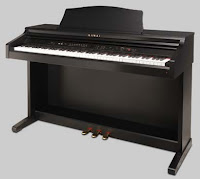 |
| Digital Piano |
A DIGITAL PIANO, in the strictest sense, tries to duplicate how an acoustic piano behaves as well as how it feels and sounds. They can be lighter weight and portable, or come in heavier grand and upright looking cabinets that resemble the look of an acoustic piano. Most of the basic digital pianos not only have regular acoustic piano tones, but they can also have anywhere from 6-1000 or more additional instrument tones as well. So the normal definition of a digital piano is an 88-key instrument (portable or stationary) that tries to duplicate the key weight, key-touch, sound, pedaling, & function of an acoustic piano.
 A KEYBOARD, on the other hand, is missing one or more of those features. It may sound like an acoustic piano, but not feel like one at all. Or it may feel like an acoustic piano, but not sound like one at all. Or it may feel & sound and operate like a digital piano but not have 88 black & white keys (maybe just 49, 61, 73, or 76). I have also played keyboards that appear to be a digital piano because it had 88 piano style keys but the keys weren’t weighted (just light & quick spring movement) and the sound was not a good piano sound. So that wouldn’t qualify in the traditional way. Owning a digital piano with 88 keys that are realistically weighted and move up & down correctly (as compared to a good real acoustic piano) is really what you should have if at all possible, especially if you have piano students in your home.
A KEYBOARD, on the other hand, is missing one or more of those features. It may sound like an acoustic piano, but not feel like one at all. Or it may feel like an acoustic piano, but not sound like one at all. Or it may feel & sound and operate like a digital piano but not have 88 black & white keys (maybe just 49, 61, 73, or 76). I have also played keyboards that appear to be a digital piano because it had 88 piano style keys but the keys weren’t weighted (just light & quick spring movement) and the sound was not a good piano sound. So that wouldn’t qualify in the traditional way. Owning a digital piano with 88 keys that are realistically weighted and move up & down correctly (as compared to a good real acoustic piano) is really what you should have if at all possible, especially if you have piano students in your home.
 |
| Keyboard |
Generally speaking, most mainstream digital keyboards these days try to duplicate the sound of a regular piano (more or less), but they normally have either 61 or 76 light weight modified piano keys that do not move or react like piano keys. In other words, it’s like typing on a virtual keyboard (such as an iPod) as opposed to a regular keyboard attached to your computer.
It just doesn’t feel right and piano teachers generally do not like them because their touch response cannot duplicate piano music very well (I would agree). However, they do have lots of other sounds and features that can be fun to use.
 |
Sophisticated, technologically advanced keyboards that focus primarily on accompaniment chord styles & rhythms are called arranger keyboards.” They are used by people who want to sound like a “one man band” or by musicians for playing “gigs” without the need for other players being there. They normally come in either the 61 or 76 key versions (although mostly 61-key in the US), and arranger keyboards work best with “unweighted” or only slightly weighted keys because of the need to use other instruments sounds and music styles with drum patterns while playing the keyboard.
Synthesizers (aka: synths or workstations) are digital “keyboards” and can have 37, 49, 61, 76, or 88 keys (synth keys are lightweight keys with spring action and are not the same as a piano weighted key) and are used primarily used to play contemporary music as well as modifying the tones that are already in that keyboard. They are used by musicians who like to adjust and change many functions on the keyboards as well as do multitrack recording and real time sound looping and performance. There are also keyboards called samplers and controllers that have specialized uses for certain types of pro applications and many of these products are used in recording studios and on stage..
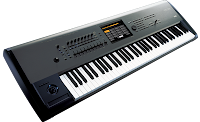 |
| Korg Piano-Synth |
Typically synthesizers do not have built-in speakers because they are primarily used on stage or in places where you connect to an external sound system. There are some 88-keydigital pianos that are also synthesizers and sound & feel more like a piano (although some do not), and they do SO much more than a regular digital piano that they are generally not referred to as a digital piano, but a “piano synthesizer” or “workstation.” Like I said, these definitions can be a bit confusing and overlapping.
A digital Piano tries to duplicate what a regular piano does and some do it very well! The home portable & cabinet digital pianos that also have lots of extra functions & features incl drums, chord styles, recording, etc., are still be called “digital pianos” but they can also be called “ensemble digital pianos” because they have fun accompaniment features and do so many more things to enhance the piano playing experience.
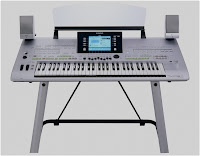 |
| Yamaha arranger keyboard |
Most of the major keyboard/digital piano manufacturers these days make keyboards & synthesizers and some of the popular higher priced ones are the Yamaha CP88, Yamaha Tyros 5, Kawai MP7SE, Korg Kronos, and the Roland RD2000. On the lower end of the keyboard price range are very nice technologically advanced models from Yamaha and Casio such as the PSR series. You can also get beginner keyboards for under $150 from Yamaha & Casio which are good for young children or even adults just to have fun and/or learn some basics.
As for digital pianos, some of my favorites are the Korg C1 Air ($1999 internet discount price), Kawai ES520 ($1399 discount price), Yamaha CLP-735 ($2899 discount price), Casio PX-870 ($1199 internet discount price), and Kawai ES120 ($949 internet discount price), among others. We also really like the popular Korg LP-380U digital piano at $1349. Click on the following link to check out my review of the Korg LP-380U: Korg LP-380U Review
I play, own, and teach on digital pianos, digital keyboards, synthesizers, and have been around them all my life. I like them all for what they do and they allow me to musically express myself in different ways. So if it were up to me, I would have at least one of each of my favorites…and I do (even more than that!) My advice is, if you want to play the piano, or are going to take piano lessons, or just want to have fun but play piano correctly and with a lot of musical expression, then get a good 88 weighted key “digital piano” (portable or cabinet version) as opposed to a keyboard. There really is a noticeable difference between the two and music comes out much better on a quality piano key weighted and graded touch digital piano. After you have played a digital piano for a while, then it may also be very enjoyable in getting & playing a keyboard or synthesizer in addition to the piano because the keyboard will enhance your playing experience in different ways.
If you want more info or advice on which model might be best for you or how to get one of these instruments for LESS MONEY than store or internet discount prices, please contact me at tim@azpianowholesale.com or call direct at 602-571-1864 (if you live in the US).




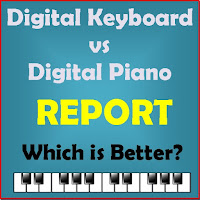
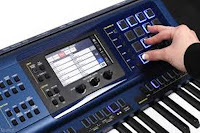
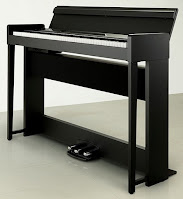










Hi,
I am quite a beginner in learning piano, i want to enjoy music and planning to learn piano seriously. I want to know what is the low priced digital piano best for enjoyment and sound quality. i am more into classical music such as Mozart and i take classical seriously but i can't afford to buy a real piano or grand piano.
I've seen alot of Yamaha digital piano like Clavinova and they all sound good, but i can't decide which one of them really produce good sound quality or perfect tones.
Your advice on playing on digital piano first before getting into keyboard is really helpful 😀 for beginners like me. I started on keyboard and it really not turn well. I wanted to start all over again with digital piano.
This is a very good blog on piano review. I'm so glad that i found it.
Thanks for these descriptions, very helpful. I've pretty much had a keyboard my whole life (play casually, never had lessons but consider myself pretty decent) but would like to get into it a bit more and hopefully start our daughter playing as well. Will definitely upgrade to a digital piano now.
Do digital pianos also produce sound according to how hard or softly we press a key like in an acoustic piano!
yes, and some digital pianos do that kind of thing better and more realistically than others.
Useful to me, thank you for allowing me to figure out the difference between these piano, the choice of which I know the piano.
Great explanations for these subtle differences between digital pianos, keyboards, and synthesizers.
Personally, in terms of replicating the feel of a real piano keyboard, I found that the Roland fantom x 8, a synthesizer, to feel better than that of any digital piano I played on.